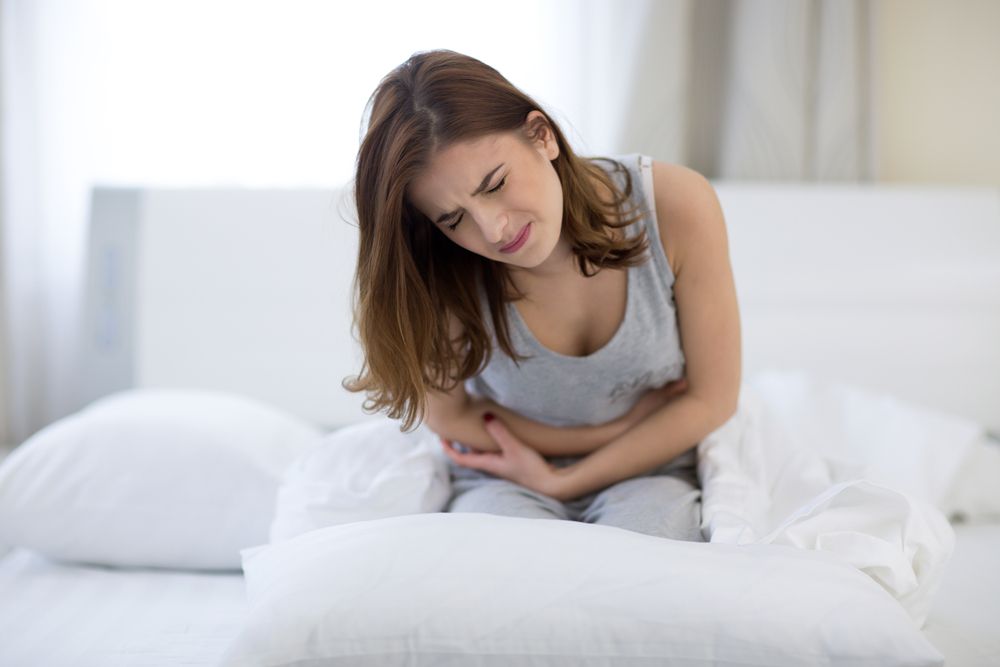Endometriosis can affect adolescents as well as adult women
Women may experience their first symptoms of endometriosis in their teen years, but the indications may not be recognized until much later.
ESB Professional/Shutterstock.com

Although endometriosis is commonly characterized as a disease affecting adult women aged 30 to 45, a review article compiled by an international panel of experts and published in Best Practice & Research Clinical Obstetrics and Gynaecology highlighted that it can also affect adolescents and younger women. In addition, the authors reported that many women may experience their first symptoms in their teen years, but that they may not be recognized as indicative of endometriosis until later in their lives.
Risk factors for endometriosis in adolescents and young women include:
- exposure to estrogen-dependent disorders such as obstructive Müllerian anomalies (due to retrograde menstruation),
- first-degree relative with endometriosis, which accounts for approximately 50% of the risk for developing the disease,
- early onset of menses,
- prolonged menstruation (> 5 days),
- short menstrual cycle interval (< 28 days), and
- early-onset dysmenorrhea.
Studies have also reported associations between exposure to passive smoke during childhood and elevated levels of 2,4-dihydroxybenzophenone (found in sunscreens) and endometriosis. Other risk factors include walking more than 5 hours a week at ages 8 to 15 years, premature birth, low body mass index, high caffeine or alcohol intake, and acne. Consumption of soy formula as an infant has been observed to double the risk of endometriosis compared to that in women who were not exposed to dietary soy isoflavones as infants, reported the authors.
Potential protective factors identified
Use of oral contraceptives (OCs), regular exercise, onset of menses after age 14, and increased intake of omega-3 fatty acids may be protective against endometriosis, according to the authors. Black and Hispanic race compared to white or Asian race may also offer some degree of protection.
Symptoms and signs in adolescents
Endometriosis lesions often have a different appearance in adolescents than in adults when visualized on laparoscopy: ovarian endometriomas and deep endometrial lesions are more the norm compared to powder-burn lesions seen in adult women. Ovarian endometriomas are typically filled with “syrup-like chocolate material” and are surrounded by duplicated ovarian parenchyma. They have fibrotic walls and adhesions on the surface, according to the authors and are lined by endometrial epithelium, stroma, and glands. They are typically visualized in the rectovaginal septum, rectum, rectosigmoid colon, bladder, ureter, uterine ligaments, and vagina, reported de Sanctis et al.
As in adults, the lesions should be staged from minimal disease (Stage 1) to severe disease (Stage 4), based on their size, location, and the types seen, and the extent of adhesions.
Distinguishing primary dysmenorrhea from endometriosis
Many teens present with dysmenorrhea, which in light of the new information about the development of endometriosis in adolescents and young women should be evaluated to rule out endometriosis. In adolescents with endometriosis, dysmenorrhea tends to be the first symptom of the disease and increases in severity over time. The pain is both cyclic and acyclic and interferes with school attendance, social activities, and exercise. Teens who are sexually active often report dyspareunia and gastrointestinal distress.
The clinical diagnosis can be verified with pelvic ultrasound and magnetic resonance imaging (MRI), but laparoscopy is the only way to obtain a definitive diagnosis.
The disease is unlikely to resolve spontaneously and is typically treated with nonsteroidal anti-inflammatory drugs, oral contraceptives, and progestin-only contraceptives. Laparoscopy and surgery may be an option for adolescents who fail to respond to medical therapy.
Addressing mental health risks in endometriosis patients
December 10th 2024A new study underscores the critical need for gynecologists and mental health professionals to collaborate in managing anxiety, depression, and sexual dysfunction in women with endometriosis, driven by chronic pain and related comorbidities.
Read More
Study finds high rates of incidental MRI findings in endometriosis cases
October 29th 2024A recent study highlights the frequent occurrence of incidental findings on pelvic magnetic resonance imaging for endometriosis, emphasizing the need for radiologists to focus on those with higher clinical significance.
Read More
